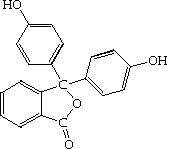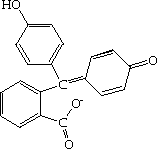| Phenolphthalein (colorless form) |

|

|
|
pH < 7 |
pH > 7 |
| Phenolphthalein (colorless form) |

|

|
|
pH < 7 |
pH > 7 |